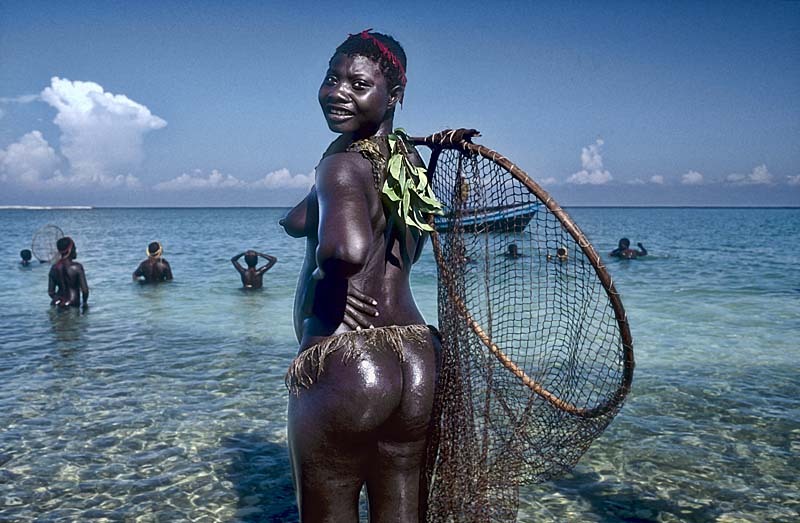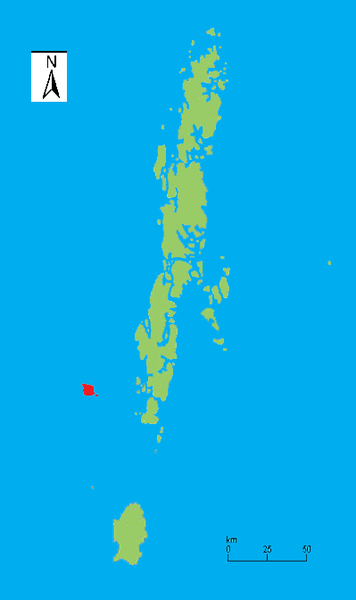I wrote a statement about India, that we are a nation of all races, ethnicities, cultures and religions, some one had objected that we do not have the black race. Here is another proof and the Bo tribe is another. India is really a very diverse nation, as I call America and India, are God's own countries, a cosmic representation of the universe.
Mike Ghouse
Mike Ghouse
Monday, June 10, 2013 22:44
The Sentinelese (also Sentineli, Senteneli, Sentenelese, North Sentinel Islanders) are one of the Andamanese indigenous peoples and one of the most uncontacted peoples of the Andaman Islands, located in India in the Bay of Bengal. They inhabit North Sentinel Island which lies westward off the southern tip of the Great Andaman archipelago. They are noted for vigorously resisting attempts at contact by outsiders. The Sentinelese maintain an essentially hunter-gatherer society subsisting through hunting, fishing, and collecting wild plants; there is no evidence of either agricultural practices or methods of producing fire. Their language remains unclassified.

*
*
The present population of the Sentinelese is not known with any great
degree of accuracy. Estimates have been produced ranging from lower than
40, through a median of around 250, and up to a maximum of 500. In the
year 2001, the Census of India officials recorded 39 individuals (21
males and 18 females); however, out of necessity this survey was
conducted from a distance and almost certainly does not represent an
accurate figure for the population who range over the 72 km2 (17,800
acres) island. Any medium- or long-term impact on the Sentinelese
population arising from the 2004 Indian Ocean earthquake and resulting
tsunami remains unknown, other than the confirmation obtained that they
had survived the immediate aftermath.On previous visits, groups of some 20–40 individuals were encountered regularly. Habitations of 40–60 individuals were found on two occasions. As some individuals are almost certainly hiding, a better approximation of group size cannot be determined. This would suggest that some 2–6 groups occupy the island. The rule of thumb population density of 1.5 km2 (370 acres)/individuals in comparable hunter-gatherer societies indicates that one such group could live off the land alone. A significant amount of food is derived from the sea. It seems that the groups encountered, at any one time, could only have come from a rather small part of the island. There appear to be slightly more males than females. At any given time, about half of the couples seemed to have dependent children or the women were pregnant.
North Sentinel Island
The Sentinelese and other indigenous Andamanese peoples are frequently
described as negritos, a term which has been applied to various widely
separated peoples in Southeast Asia, such as the Semang of the Malay
archipelago and the Aeta of the Philippines, as well as to other
peoples as far afield as Australia (notably former populations of
Tasmania). The defining characteristics of these “negrito” peoples (who
are not a monophyletic group) include a comparatively short stature,
dark skin and “peppercorn” hair, qualities also found commonly across
the continent of Africa. No close contacts have been established, but
the author Heinrich Harrer described one man as being 1.6 m (5′ 4″) tall
and apparently left handed.
From 1967 onwards, the Indian authorities in Port Blair
embarked on a limited programme of attempts at contacting the
Sentinelese, under the management of the Director of Tribal Welfare and
anthropologist T. N. Pandit. These “Contact Expeditions” consisted of a
series of planned visits which would progressively leave “gifts”, such
as coconuts, on the shores, in an attempt to coax the Sentinelese from
their hostile reception of outsiders. For a while, these seemed to have
some limited success; however, the programme was discontinued in the
late 1990s following a series of hostile encounters resulting in several
deaths.
In 2006, Sentinelese archers killed two fishermen who were
fishing illegally within range of the island. The archers later drove
off, with a hail of arrows, the helicopter that was sent to retrieve the
bodies. To this date, the bodies remain unrecovered, although the
downdraught from the helicopter’s rotors at the time exposed the two
fishermen’s corpses, which had been buried in shallow graves by the
Sentinelese.
On 2 August 1981, the ship Primrose grounded on the North Sentinel
Island reef. A few days later, crewmen on the immobile vessel observed
that small black men were carrying spears and arrows and building boats
on the beach. The captain of the Primrose radioed for an urgent
airdrop of firearms so the crew could defend themselves, but did not
receive them. Heavy seas kept the islanders away from the ship. After a
week, the crew were rescued by a helicopter working under contract to
the Indian Oil And Natural Gas Commission (ONGC).The Sentinelese apparently survived the 2004 Indian Ocean earthquake and its after-effects, including the tsunami and the uplifting of the island. Three days after the event, an Indian government helicopter observed several of them, who shot arrows and threw stones at the hovering aircraft with the apparent intent of repelling it. Although the fishing grounds of the Sentinelese were disturbed, they appear to have adapted to the island’s current conditions.
Amazing that in 2013 there is still a tribe that has had virtually no contact with the outside world. To resist contact in such a vigilant way. Reminds me of the scene from Mutiny On The Bounty with Anthony Hopkins.
Source: http://markosun.wordpress.com/2013/06/11/lost-tribe-on-small-island-in-the-indian-ocean-remain-virtually-untouched-by-modern-civilization/




No comments:
Post a Comment